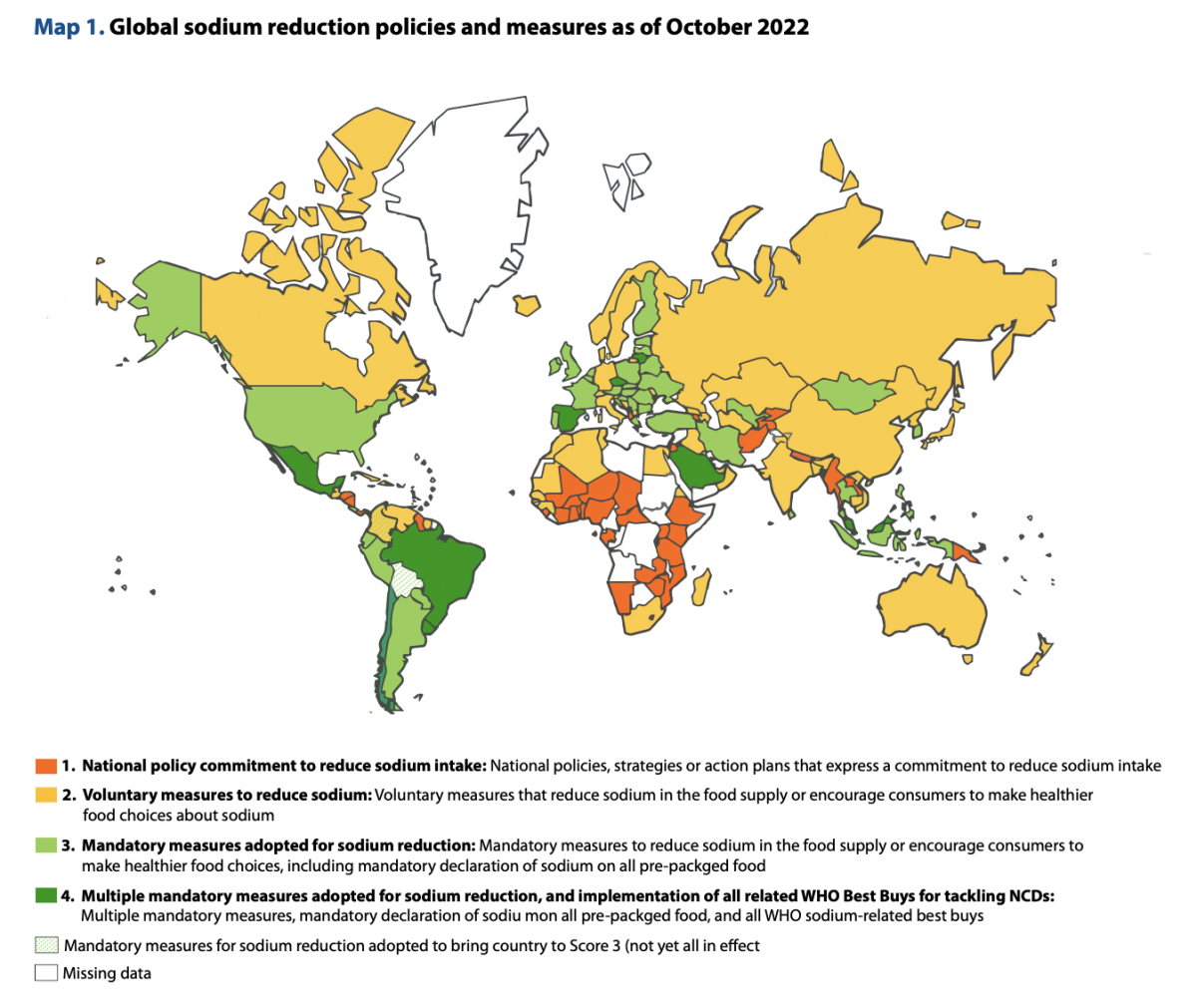Reduce salt to save lives, says new WHO report

Why is sodium reduction so important? It’s one of the top factors behind 11 million preventable NCD deaths per year from unhealthy diets, shows the first-of-its-kind WHO Global report on sodium intake reduction.
What people eat has changed dramatically over the last few decades, with fewer fruits and vegetables and more processed foods high in salt, sugar and fat. Today, unhealthy diets are a major public health and development challenge worldwide, and the recently released WHO global report on sodium intake reduction demonstrates that sodium - found on tables everywhere in the form of salt - is one of the key ingredients behind the global surge in noncommunicable diseases.
The evidence in the report is clear. Although sodium is an essential nutrient, most people around the world consume far more than our bodies require. When consumed in excess, it caused blood pressure to rise and becomes a key risk factor for premature death from cardiovascular disease, stroke and other NCDs. More evidence is emerging that reveals strong links as well between high sodium intake and increased risk of other health conditions such as gastric cancer, obesity, osteoporosis and kidney disease. It’s been shown that an unhealthy diet is the cause of 11 million preventable NCD deaths each year, and the largest number of diet-related deaths, an estimated 1.89 million each year, is associated with excessive intake of sodium.
The report also shows that the world is far off-track to achieve its global target of reducing sodium intake by 30% by 2025, a commitment made by all 194 WHO Member States in 2013. WHO calls on all countries to implement the ‘Best Buys’ for sodium reduction, and on manufacturers to implement the WHO benchmarks for sodium content in food. If the WHO recommended policies were implemented now, we would see sodium consumption reduced by over 20% by 2025, getting close to the target set in 2013 and saving millions of lives with very low-cost interventions.
Strong government leadership and commitment is required to rapidly adopt, implement and monitor comprehensive mandatory sodium reduction legislation. A mandatory approach is best to protect against industry interference that often delays or weakens food and nutrition policies and programmes.
Recommended policy and other measures include:
- Reformulating foods to contain less salt, and setting targets for the amount of sodium in packaged foods and meals.
- Establishing public food procurement policies to limit salt or sodium rich foods in public institutions such as hospitals, schools, workplaces and nursing homes.
- Front-of-package labelling that helps consumers select products lower in sodium.
- Behaviour change communication and mass media campaigns to reduce sodium consumption.
As part of the report, WHO developed a Sodium country score card for Member States based on the type and number of sodium reduction policies they have in place. The results show countries are not living up to their commitments. As of October 2022, just 5% of Member States had implemented at least two mandatory sodium reduction policies, and all WHO sodium-related best buys for tackling noncommunicable diseases. A further 22% had implemented at least one mandatory policy or measure.

The global average sodium intake is estimated to be 10.8 grams per day, more than double the WHO recommendation of less than 5 grams per day (one teaspoon). Much of this excess sodium gets into our diets through ultra-processed foods, which are often high in salt as well as health-harming sugar and fats. These products tend to be cheaper than healthier alternatives, like fresh fruits and vegetables.
A person’s ability to maintain a healthy diet is often not within their control – it is influenced by the food environment where they live, early life nutrition, income, and accessibility. Poorer people in all parts of the world struggle to access and maintain a healthy diet. It is in these settings where ultra-processed food products are most prevalent. An estimated three billion people cannot afford healthier food choices with poverty negatively impacting the nutritional quality of food, putting resource-low communities and households at higher risk of NCDs.